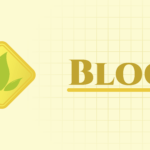Every year on April 20th, cannabis enthusiasts, advocates, and entrepreneurs come together to celebrate what has become the most iconic day in cannabis culture—420. What started as an underground code among a group of high school friends in California has evolved into a global movement, representing more than just an excuse to light up. 420 is a day of unity, advocacy, and reflection on the progress made in cannabis legalization, as well as the challenges that remain.
While mainstream culture often portrays 420 as a day of indulgence, its significance runs much deeper. It’s a reminder of the long and often difficult fight for legalization, the individuals who have been disproportionately affected by cannabis prohibition, and the future of an industry still in its infancy.
A Counterculture Rebellion Turned Mainstream
The origins of 420 trace back to the early 1970s when a group of students in San Rafael, California, known as the “Waldos,” used the term as a code for their cannabis meetups. Decades later, it became an unofficial holiday, popularized by the counterculture movement, music festivals, and pro-cannabis activists.
For many years, celebrating 420 meant defying the law, pushing back against a government that labeled cannabis a dangerous drug while ignoring its medical and economic potential. It was a counterculture statement—an act of rebellion against outdated policies and anti-cannabis propaganda.
Today, the landscape has changed dramatically. Cannabis is legal for recreational use in 24 U.S. states and medically legal in many more. Countries around the world have also begun to embrace legalization, recognizing the economic benefits of a regulated cannabis market. Major corporations have jumped in, and dispensaries now look more like high-end boutiques than underground headshops. But despite its newfound legitimacy, 420 remains a day to honor the roots of the movement.
A Reminder of Those Left Behind
One of the biggest contradictions in the cannabis industry today is that while businesses profit from legal cannabis, thousands of people—many from marginalized communities—remain incarcerated for nonviolent cannabis offenses. According to the Last Prisoner Project, over 40,000 individuals in the U.S. are still behind bars for cannabis-related charges.
420 isn’t just about celebrating legal access to cannabis—it’s about fighting for those who don’t yet have that privilege. The war on drugs disproportionately targeted Black and Latino communities, and while some states have implemented social equity programs, the road to justice is far from complete.
As we roll up and pass around a joint on 420, we should also be passing along awareness of the need for expungement programs, social equity licenses, and fair access to the legal market for those who have been criminalized for what is now a multi-billion-dollar industry.
The Future of 420: A Holiday of Advocacy and Industry Growth
420 has gone from an underground celebration to a marketing goldmine, with brands offering special promotions, festivals, and cannabis-themed events. While some criticize the commercialization of the holiday, it’s also a sign of how far the movement has come.
But the work isn’t finished. Federal legalization is still uncertain, and restrictive policies continue to hinder cannabis businesses from thriving in the same way as other industries. Banking restrictions, heavy taxation, and inconsistent state laws still pose challenges.
As we move forward, 420 should continue to be a day of education and activism. It’s not just about getting high—it’s about getting informed, getting involved, and making sure that the progress in cannabis reform benefits everyone.
So this April 20th, whether you’re attending a festival, supporting a cannabis business, or simply enjoying a moment of relaxation, remember that 420 is more than a holiday. It’s a symbol of resilience, change, and the ongoing fight for fairness in the cannabis industry.


